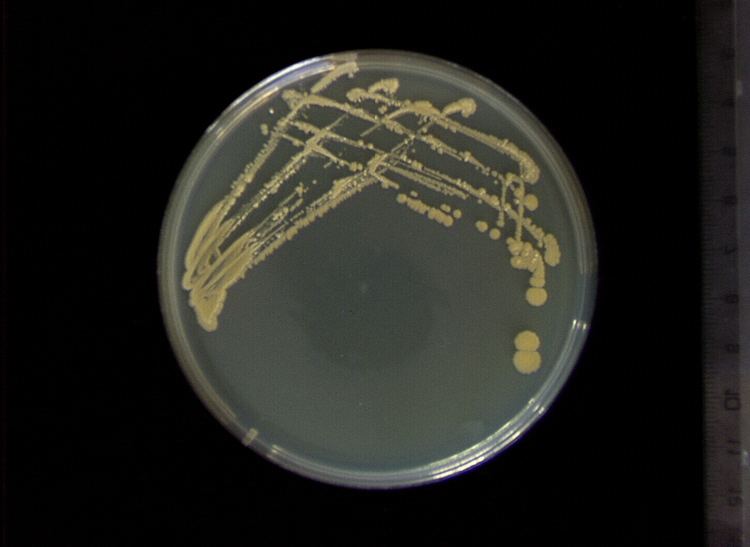Rank Genus | Phylum Firmicutes | |
 | ||
Similar Staphylococcus sciuri, Staphylococcaceae, Staphylococcus cohnii, Staphylococcus lentus, Staphylococcus carnosus | ||
How to say macrococcus high quality voices
Macrococcus is a genus of Gram-positive cocci belonging to the family Staphylococcaceae. The genus was created in 1998.
Contents
- How to say macrococcus high quality voices
- History
- Description
- Genome
- Evolution
- Clinical
- Etymology
- References
History
The first recognised species in this genus (Macrococcus caseolyticus) was initially named Micrococcus caseolyticus by Evans in 1916. It was then renamed Staphylococcus caseolyticus by Schleifer et al in 1982. It received its current designation in 1998 by Kloos et al.
Description
Members of the genus Macrococcus are Gram-positive, nonmotile, nonspore-forming cocci that are coagulase negative and catalase positive. They can be distinguished phenotypically from most staphylococci on the basis of their cellular morphology (they are 2.5 – 4.0 times larger in diameter compared to Staphylococcus aureus) and their positive cytochrome c oxidase reaction. Species in this genus are resistant to bacitracin and lysozyme and sensitive to furazolidone. The DNA base content is 38–45 mol% G+C. The cell walls lack teichoic acid. They are usually unencapsulated.
The type species is Macrococcus equipercicus.
Genome
The first genome of this genus was sequenced in 2009
Evolution
This genus is the closest known relation of the genus Staphylococcus. Within the Staphylococcus genus, the closest relations of the Macrococcus appear to be the Staphylococcus scuri group.
Clinical
This genus is not known to cause human disease.
A methicillin resistance gene has been identified in this genus. The significance of this discovery is not yet clear.
Etymology
The name Macrococcus is a masculine New latin noun composed of the Greek adjective macros (μάκρος) meaning "large" and the Neolatin masculine noun coccus intended to mean a coccus shaped bacterium, as it comes from the Greek masculine noun kokkos (κόκκος) meaning "berry", consequently the noun Macrococcus, means "large coccus".
The eymology of the epithet of the 7 species contained in the genus are:
